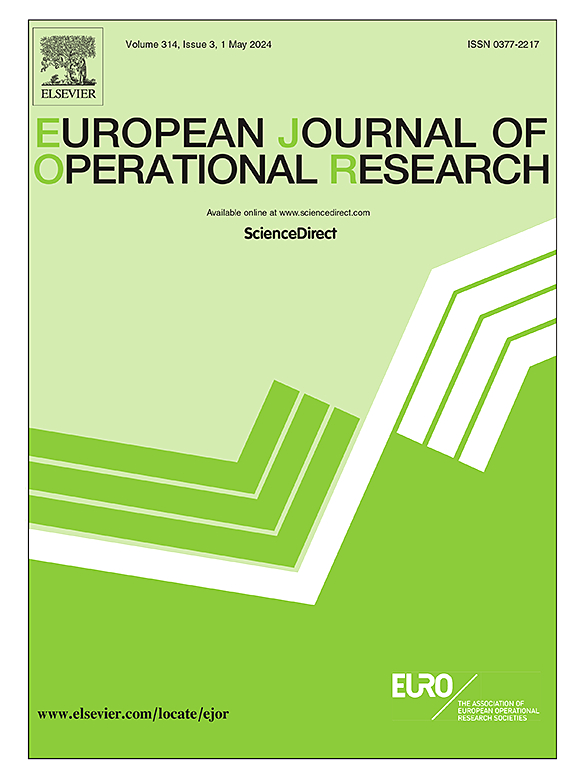在存在干扰的情况下优化处理分配
IF 6
2区 管理学
Q1 OPERATIONS RESEARCH & MANAGEMENT SCIENCE
引用次数: 0
摘要
在影响最大化(IM)中,目标是在给定预算的情况下,选择网络中最优的实体集进行处理,以使总效果最大化。例如,在市场营销中,目标是通过对目标客户的直接处理效果和针对这些客户的间接溢出效应,将总响应率最大化的一组客户作为目标。最近,人们提出了新的方法来评估存在网络干扰的治疗效果。然而,如何利用这些模型做出更好的治疗分配决策的问题在很大程度上被忽视了。传统上,在隆起建模(UM)中,根据估计的处理效果对实体进行排序,并对排名靠前的实体进行分配处理。因为在网络环境中,实体会相互影响,所以UM排序方法将是次优的。在网络设置中寻找最佳治疗分配的问题是np困难的,通常必须启发式解决。为了填补IM和UM之间的空白,我们提出了OTAPI:在存在干扰的情况下优化治疗分配,以利用治疗效果估计找到IM问题的解决方案。OTAPI包括两个步骤。首先,训练因果估计器来预测网络设置中的治疗效果。其次,利用该估计器通过将其集成到经典IM算法中来确定最佳治疗分配。我们证明了这种新方法在合成和半合成数据集上都优于经典的IM和UM方法。本文章由计算机程序翻译,如有差异,请以英文原文为准。
Optimizing treatment allocation in the presence of interference
In Influence Maximization (IM), the objective is to — given a budget — select the optimal set of entities in a network to target with a treatment so as to maximize the total effect. For instance, in marketing, the objective is to target the set of customers that maximizes the total response rate, resulting from both direct treatment effects on targeted customers and indirect, spillover, effects that follow from targeting these customers. Recently, new methods to estimate treatment effects in the presence of network interference have been proposed. However, the issue of how to leverage these models to make better treatment allocation decisions has been largely overlooked. Traditionally, in Uplift Modeling (UM), entities are ranked according to estimated treatment effect, and the top entities are allocated treatment. Since, in a network context, entities influence each other, the UM ranking approach will be suboptimal. The problem of finding the optimal treatment allocation in a network setting is NP-hard, and generally has to be solved heuristically. To fill the gap between IM and UM, we propose OTAPI: Optimizing Treatment Allocation in the Presence of Interference to find solutions to the IM problem using treatment effect estimates. OTAPI consists of two steps. First, a causal estimator is trained to predict treatment effects in a network setting. Second, this estimator is leveraged to identify an optimal treatment allocation by integrating it into classic IM algorithms. We demonstrate that this novel method outperforms classic IM and UM approaches on both synthetic and semi-synthetic datasets.
求助全文
通过发布文献求助,成功后即可免费获取论文全文。
去求助
来源期刊

European Journal of Operational Research
管理科学-运筹学与管理科学
CiteScore
11.90
自引率
9.40%
发文量
786
审稿时长
8.2 months
期刊介绍:
The European Journal of Operational Research (EJOR) publishes high quality, original papers that contribute to the methodology of operational research (OR) and to the practice of decision making.
 求助内容:
求助内容: 应助结果提醒方式:
应助结果提醒方式:


